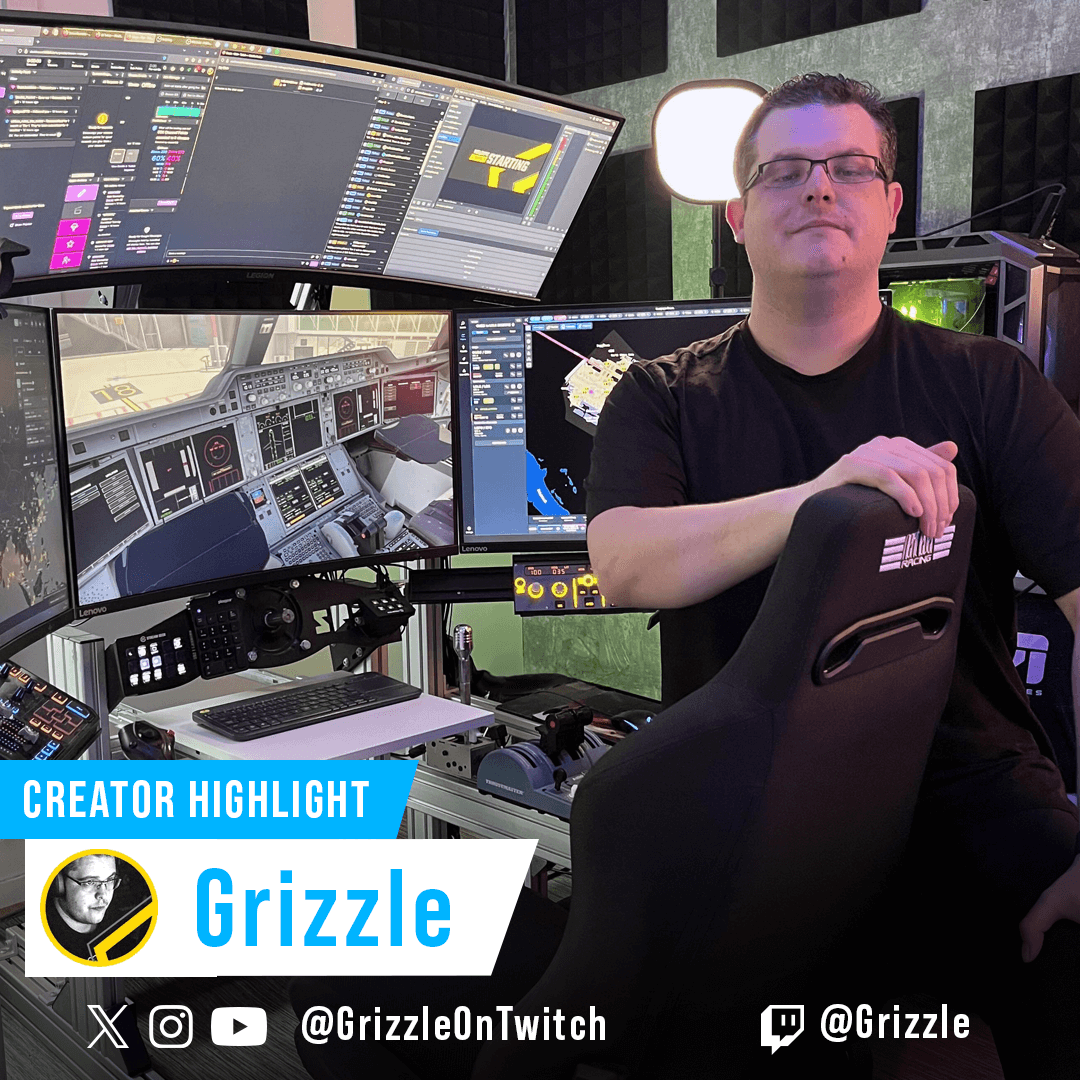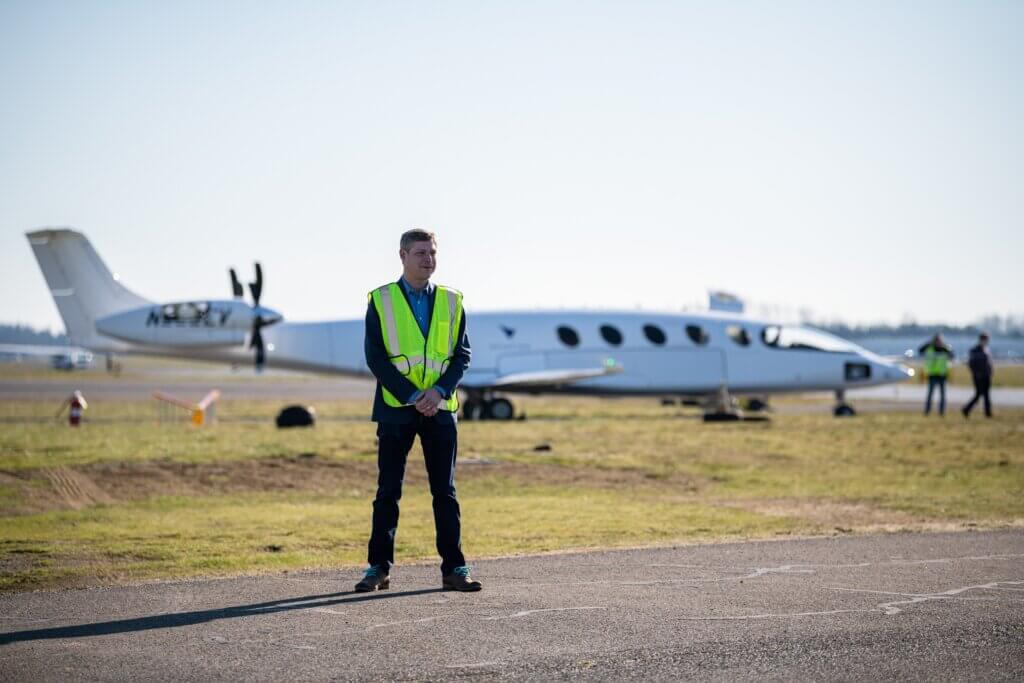Although fans of Microsoft Flight Simulator come from all over the world and have a variety of backgrounds and interests, one thing unites us all: a passion for aviation. For many players, flying in the simulator is as close as they’ll ever get to the real thing. For others, simulated flying represents a chance to practice their real-life flying skills, with many MSFS players either being licensed pilots or student trainees. Some players even work professionally in the aviation industry in either flying or non-flying roles such as air traffic controllers, dispatchers, maintenance technicians, engineers, or ground crew members. When it comes to real-world aviation, one long-time fan of Microsoft Flight Simulator truly does it all, though.
Gregory Davis is a licensed glider (GPL), private (PPL), and commercial pilot (CPL). He holds both a Bachelor and Master’s degree in Aerospace Engineering as well as a Master of Business Administration. Throughout his professional career, he has worked in a variety of roles in the aviation industry, starting as a repair and modification engineer on the Lockheed C-130 Hercules before taking on several more increasingly senior positions such as the Production Engineering Manager and later Plant Manager for the de Havilland Canada Twin Otter program. More recently, he was responsible for global aftermarket support for the Canadair CL-series firefighting aircraft.
In 2021, Gregory embarked on a new career challenge when he accepted the role of President of Eviation, an electric aircraft company based out of Arlington Municipal Airport (ICAO: KAWO) in the greater Seattle area. In early 2022, he was also named the company’s interim CEO. For Greg, this represents an opportunity to do something he’s dreamed about for his entire life: lead a team designing and building a revolutionary new airplane from the ground up. Eviation describes their upcoming plane, the nine-passenger Alice, as “the world’s first all-electric commuter aircraft”. A prototype Alice is currently undergoing ground trials in Arlington, and the company is planning for its first test flight later this year.
Gregory was recently interviewed on NBC’s Today Show during a feature segment about the Eviation Alice. You can watch the clip here:
In recognition of Earth Day, we spoke with Gregory about his love of flight (both real and simulated) and the upcoming green aviation revolution.
How long have you been a player of the Microsoft Flight Simulator series? What are some of your most memorable moments as a sim pilot?
I remember playing a really early version of Microsoft Flight Simulator on a Commodore 64 back in the mid 1980s. In those days, all you could see was a white runway on a blue screen. I’ve been an avid fan and active player of every entry in the series ever since. I’ve really enjoyed watching the technology mature over the decades. With the latest version, I’ve been especially impressed with the accuracy of the global scenery. Like almost everyone else, I thought it was a real thrill to find my house during my first flight.
How has Microsoft Flight Simulator influenced your personal career in aviation, either as a pilot, an aerospace engineer, or a business executive?
When I was training for my Private Pilot License, I spent hours upon hours practicing circuits and approaches in Microsoft Flight Simulator 98. Being able to practice procedures from home became even more valuable when I was training for my Instrument Rating.
Like many new pilots, I was nervous speaking on the radio as a student trainee. I found it very helpful to have simulated conversations with Air Traffic Control. Being able to hear the correct phraseology on the same real-world frequencies I was using greatly improved my confidence and helped me get over my “mic fright”.
Can you briefly describe some of the ways flight simulators are used when designing a new aircraft and preparing for its first flight?
Development of a new type of aircraft is both complex and complicated. Complicated because of the number of factors that go into designing the plane, and complex because of the unknowns. Good simulations of aircraft systems and performance gives the design team the chance to try different ideas without physically building and test flying a prototype plane. Simulators save us both time and money during the development process and allow us so much more than we could do without simulation.
April 22 is Earth Day. What is your vision for the future of environmentally-sustainable aviation in the short, medium, and long terms?
The technology we have today will allow us to achieve short-range commercial travel with electric aircraft. Ultimately, sustainable aviation will be a multi-pronged approach. Electric planes are only one piece of the puzzle. Sustainable aviation fuel (SAF) will help reduce the environmental footprint of conventional aircraft. There are other exciting technologies, some of which are more than 10 years away from commercial operation outside of electric aviation, that offer hope for higher energy density and capacity to enable larger, longer-range planes.
Electric propulsion represents the biggest technological change in the aviation industry since the start of the jet age over 70 years ago. What are some of the most difficult challenges to overcome when designing electric-powered aircraft compared to conventional piston or jet engines?
It’s the batteries! Right now, in order to make a useful nine-passenger electric airplane, we have to carry around 8,000 pounds of batteries, and unlike conventional aircraft, our batteries don’t get any lighter after their energy has been used. This influences the entire design of the plane. We have designed Alice to make sure the batteries are housed and packaged in the most efficient way possible. Because the energy in Alice doesn’t burn off like fuel, we don’t have the luxury of putting our fuel tanks in the wings (Editor’s note: Alice’s batteries are located in the fuselage). This means the size and shape of Alice’s wings is not dictated by fuel tank requirements, allowing our engineers to use the most efficient design to minimize drag.
Do you have any closing thoughts you’d like to share with the Microsoft Flight Simulator player community?
Eviation has the most amazing group of people working to develop our technology. I’m incredibly honored and grateful to work with such a passionate, creative, and capable team driven to accomplish our mission of bringing the world’s first all-electric commuter aircraft to market. On a personal note, I’ve been watching the Microsoft Flight Simulator player community in this new era of livestreaming and am thoroughly pleased to count myself as a member of such a warm, welcoming, and knowledgeable community of aviation enthusiasts.
Gregory Davis will be joining the Microsoft Flight Simulator stream team as a special guest co-host for Community Fly-in Friday on Earth Day: Friday, April 22. If you would like to fly along with the CEO of Eviation and ask questions about the future of environmentally-sustainable flight, you can find all the details here.



